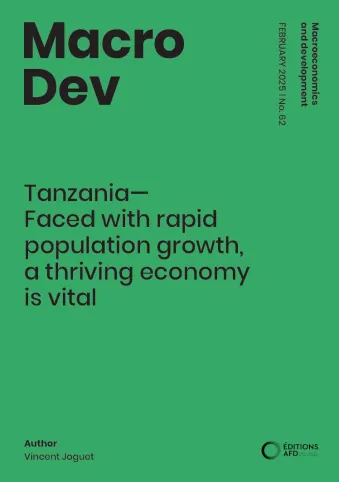Share the page
Tanzania— Faced with rapid population growth, a thriving economy is vital
Published on

Since gaining independence, Tanzania has maintained political stability and avoided major conflicts, despite recurring periods of authoritarian rule. This stability has fostered strong economic growth, backed by international donors. In 2020, Tanzania achieved lower-middle-income country (LMIC) status, five years ahead of its target of 2025.
The country’s growth trajectory is primarily driven by domestic demand. Tanzania benefits from a large domestic market of nearly seventy million people and an investment rate unmatched in the region.
This economic structure has acted as a buffer against recent global crises, shielding Tanzania from the severe impacts experienced by other sub-Saharan African nations that are more vulnerable to external shocks. In the short to medium term, growth is expected to exceed 6%, supported by moderate and controlled inflation, an accommodative monetary policy, robust exports (mainly gold and tourism), and significant investment in large-scale infrastructure projects.
In 2022, the Tanzanian authorities, recognizing the need to improve public finances, sought IMF support to advance reforms. Among other objectives, these were designed to boost tax revenues, which were particularly low and strained by a growing debt burden. However, fiscal discipline is one of the country’s strengths. Ongoing consolidation efforts—combined with an improving current account deficit driven by higher gold prices, a surge in tourism, and declining global commodity prices—are expected to contribute to a gradual reduction in the debt ratio.
However, the country’s economic growth has not been very inclusive, which has hindered progress in human development, both in pace and scope. Tanzania remains among the lowest-ranked countries in this area. This, in turn, constrains productivity and long-term growth potential. The country’s rapidly expanding population, one of the fastest-growing in the world, is putting pressure on per capita income and undermining the still-modest progress that has been made in poverty reduction and social-sector investment. Beyond demographic challenges, environmental risks linked to climate vulnerability and biodiversity threats further complicate Tanzania’s development trajectory.
Useful Information
-
Authors
-
Edition
-
62
-
Number of pages
-
20
-
ISSN
-
2116-4363
-
Collection
-
Macrodev
-
Other languages
